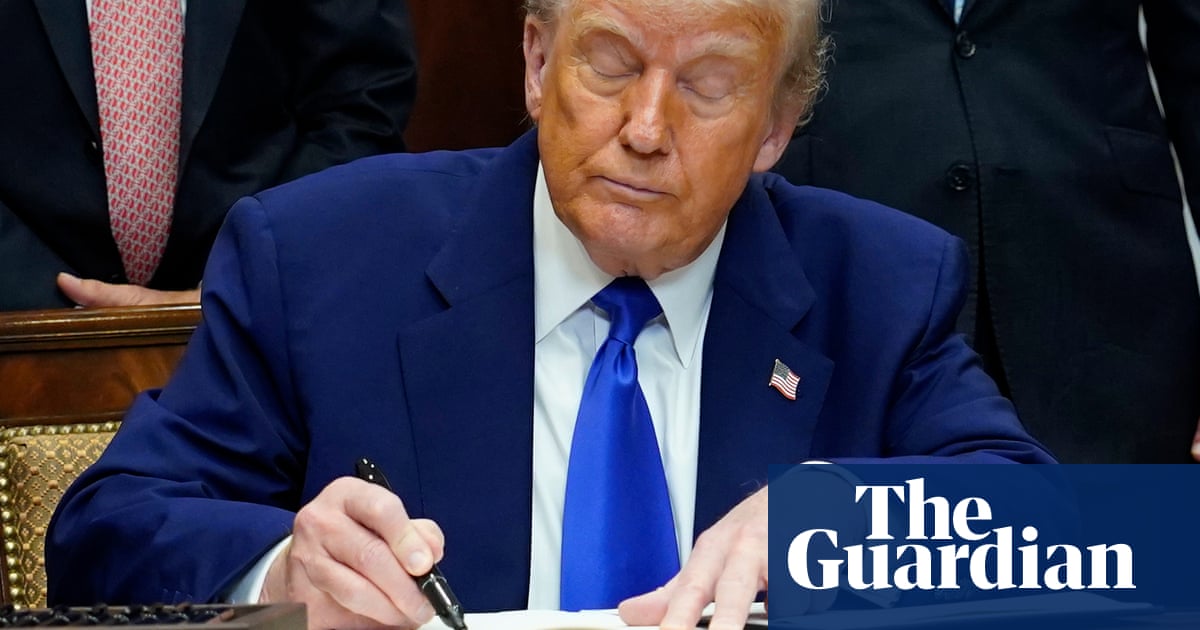Easing tensions between the US and China on trade is good news for Australia’s China-dependent economy, experts say, but they warn market uncertainty created by Donald Trump is “worse than the 10% tariff”.
After promising to “tariff the hell” out of China, Trump reverted to a much more conciliatory tone this week, saying “we’re not looking to hurt China” and that the agreement represented a“total reset”.
While Wall Street rallied hard on Monday night, Australian investors were less impressed. The benchmark S&P/ASX 200 share market index, which received a boost on Monday afternoon, retraced modest early gains on Tuesday to end the day just 0.4% higher at 8,269 points.
Jenny Gordon, an honorary professor at the ANU and a former chief economist at the Department of Foreign Affairs and Trade, cautioned there was no end in sight to the market uncertainty.
Gordon said the experience of the UK and China demonstrated that countries were not coming to the White House as supplicants.
“I think the one thing that has changed is that the world is pushing back against this idea that there would be countries turning up to the US and offering things,” she said.
“And part of that is the Americans don’t know what they want. The Japanese asked the Americans ‘Tell us what you want’, and the response was ‘Tell us what you’ve got to give’.
“Certainly countries are not coming on bended knees.”
After negotiations in Switzerland over the weekend, the US said it would slash crippling tariffs on Chinese imports, from 145% to 30%, for 90 days.
Sign up for Guardian Australia’s breaking news email
In return and aspart of a dealthatwent much furtherthan anticipated, China reduced its levy on most American imports from 125% to 10%.
The Chinese also committed to removing non-tariff countermeasures taken against the US since the 2 April “liberation day”, including export controls on rare earths.
Hayley Channer, a director at the University of Sydney’s US Studies Centre, said it was now obvious that “Trump is fundamentally overestimating the US’s ability to unilaterally change trade relations across the board.
“He is seeing that other countries have a lot of power in terms of global supply chains that can replace the US,” Channer said.
Despite the progress, experts agreed there would be no immediate end to the huge uncertainty attached to America’s trade policy, despite the euphoric response in financial markets.
Channer said Australian businesses could find a way to cope with American import taxes. It was the uncertainty about what Trump would do next that “scared” companies, she said.
“That uncertainty is worse than the 10% tariff.
Sign up toAfternoon Update
Our Australian afternoon update breaks down the key stories of the day, telling you what’s happening and why it matters
after newsletter promotion
“If Trump had said there would be 10% tariffs for the rest of his four-year term, then they (businesses) would manage that risk. It’s this unpredictability that has so many second and third order effects.”
The ANZ chief economist, Richard Yetsenga, said it was positive that theworst-case scenarioof an effective trade embargo between the US and China had been lifted.
“The good news is that the safety cover is back on the mutually assured destruction button, so we can at least book-end the range of outcomes into a more manageable range,” Yetsenga said.
But he warned recent negotiations with the UK suggested Trump’s “baseline” 10% tariff on imported goods into America were set to stay.
“The world is still less globalised and the US is still imposing tariffs, but they are more of a disruptive kind than a destructive kind.
“And it still leaves Australia facing a global economy that is less open and less multilateral. The assumption would be 10% tariffs on Australia, with the hope of something better on steel and aluminium.”
Reflecting what was good news for Australia’s economy, financial markets now see less scope for theReserve Bank of Australiato cut interest rates this year – pricing in three rather than four moves this year.
The consensus remains, however, that the central bank will cut its cash rate from 4.1% to 3.85% next Tuesday.
While the wind-back of the US-China tariffs were welcome, Channer said there was no resolution of the underlying and long-held American grievances with China.
These included Trump’s original complaint during his first term about America’s huge trade deficit with China, the coerced acquisition of American companies’ technology and theft of intellectual property, as well as accusations that the world’s second-largest economy was abusing its developing nation status to gain favourable treatment by the World Trade Organization.
